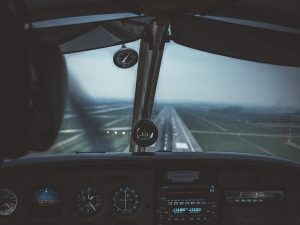
Ever wonder if airplanes can hydroplane on the runway? Not all flights occur when the sky is clear and sunny. As long as the weather isn’t severe, many airplanes will take off and land in the rain. As a result, pilots must deal with wet runways.
The Basics of Hydroplaning
Hydroplaning is a phenomenon in which a vehicle’s tires fail to create traction due to the presence of water. It occurs when paved surfaces become wet. A layer of water will accumulate between the vehicle’s tires and the underlying road, leading to a loss of traction.
Why Hydroplaning Occurs
Hydroplaning occurs due to the presence of water between a vehicle’s tires and the road. A vehicle’s tires must be able to “grip” the road. Otherwise, the driver won’t be able to control the vehicle. When the road is covered in water, tires may fail to create sufficient traction. Instead of gripping the road, they will hydroplane by skidding or gliding across it.
Airplanes and Aquaplaning
When most people think of hydroplaning, they envision automobiles. Cars, trucks and SUVs are all susceptible to this phenomenon when it rains. It’s a common cause of weather-related accidents. While airplanes don’t necessarily hydroplane — hydroplaning is typically limited to automobiles — they can experience a similar phenomenon known as aquaplaning.
Aquaplaning involves the buildup of water on a runway. Like with hydroplaning, it results in a loss of traction. An airplane’s tires may struggle to create traction on the wet runway. leading to a loss of control. In aviation, this is known as aquaplaning.
Factors that can increase the risk of aquaplaning include the following:
- Depth of the water on the runway
- The condition of the airplane’s tires
- The type of runway and whether it’s smooth or rough
- The speed at which the airplane is traveling on the runway
Types of Aquaplaning
There are several different types of aquaplaning, including dynamic, viscous and reverted rubber. Dynamic aquaplaning occurs when water pushes up the tires at high speeds. Viscous aquaplaning occurs when a thin layer of water gets trapped on the runway. Reverted rubber aquaplaning occurs when hot tires turn the water on a wet runway to steam.
There are nuances between dynamic, vicious and reverted rubber aquaplaning, but they all involve the presence of water. Water on the runway can make it difficult for an airplane’s tires to create traction. This phenomenon is similar to hydroplaning, but it’s known as aquaplaning in the aviation industry.



